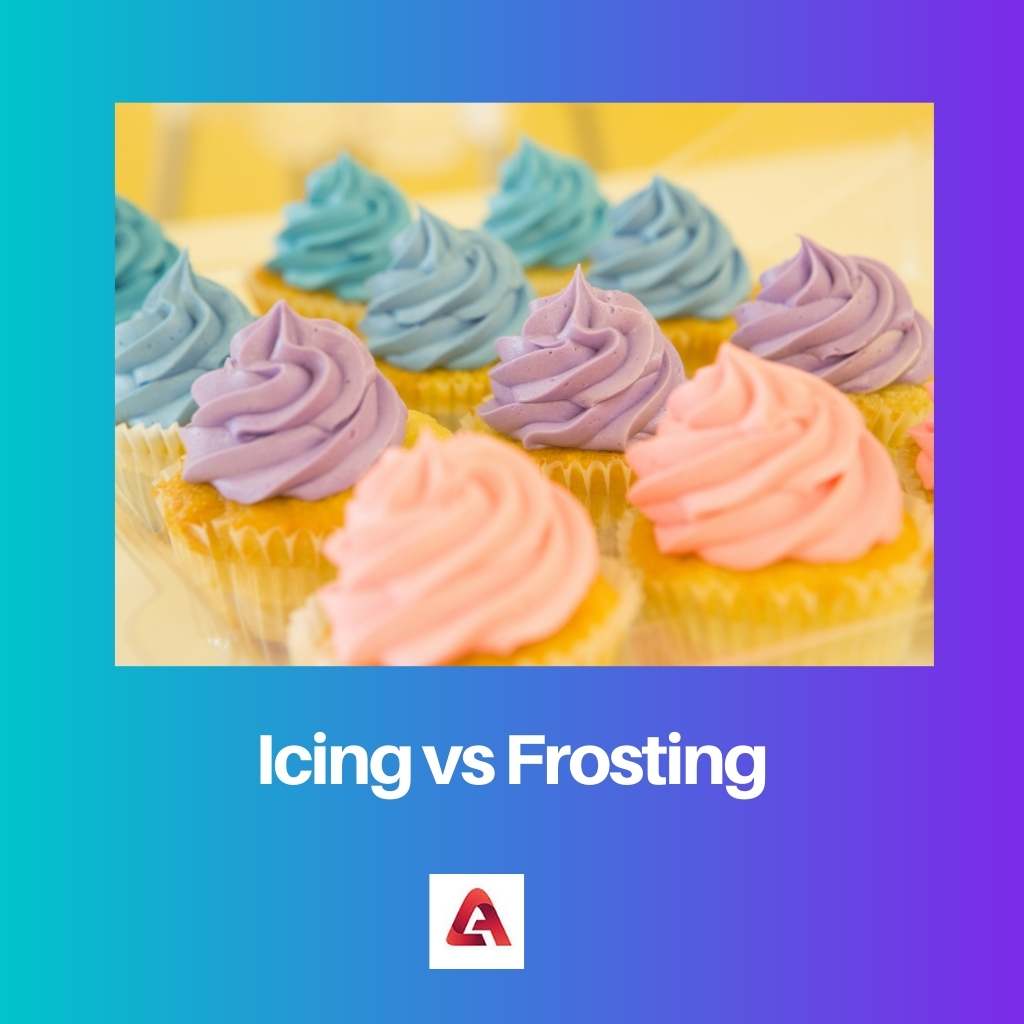The majority of people believe that frosting and icing are two separate names for the very same item. For instance, many people in the United States refer to frosting as opposed to icing.
Nonetheless, an increasing number of specialists believe there have been significant differences between the two terms, and this article highlights those differences for ease of understanding.
Key Takeaways
- Icing is a thin, glossy glaze made of powdered sugar, liquid, and flavorings, while frosting is a thick, fluffy spread made from sugar, butter, and flavorings.
- Icing provides a smooth, shiny finish to baked goods, whereas frosting offers a thick, creamy texture and appearance.
- The frosting is used primarily for cakes and cupcakes, while the icing is more versatile and can be applied to cookies, pastries, and other confections.
Icing vs Frosting
Icing is a rich and velvety coating made with sugar, milk, water, scrambled eggs, cream, flavorings, or mascarpone and used to coat baked goods. It has a soft, light, and shiny appearance. Frosting is a thick and fluffy coating for cake and baked goods that settles quickly and becomes hard and strong when it does.

Royal icing is the much more common type of frosting for elaborate cookie decoration. It also includes confectioners’ sugar and water and egg whites or creme flour, which adds solidity and helps the icing harden to a firm, polished coating.
Icing, on the other hand, is a thin, sweet coating that solidifies as it cools. Regardless of the type of dessert cooked, frosting is a velvety icing created with sugar and enhanced with margarine, egg whites, mascarpone, or flavourings.
Comparison Table
| Parameters of Comparison | Icing | Frosting |
|---|---|---|
| Texture | Thin and softer texture with a subtle taste of lime or orange. | Thick and glazy texture with strong flavours like cinnamon and coffee. |
| Uses | Used over cakes and pastries. Also used as creme fillings inside biscuits and cakes. | Used over cakes and Donuts as well as pastries. It can also be used as croissant fillings. |
| Components | Confectioner’s sugar and water that is enriched with ingredients like butter, egg whites and lime juice. | Sugar or corn syrup, butter, flavour, chocolate chips and butterscotch chunks, cream cheese etc. |
| Flavours | Lemon, Lime, Orange, Raspberries etc. | Coffee, Chocolate, Pink berries, Cardamom and cinnamon. |
| Applying Method | Using a piping bag and nozzle. | Spatula or spoon, butterknife. |
What is Icing?
Icing is a rich, velvety frosting created by combining sugar with a fluid, such as milk and water, and then adding cream, scrambled eggs, mascarpone, or flavourings.
To produce a particular colour, edible colours can be applied to icing mixes; this is due to the implications of additional components. On top of the icing, sparkles, liquid inks, and other embellishments are frequently utilized.
Icing is described as being lighter and shinier than confectioners’ sugar. The term “icing” is believed to be used with a more sophisticated meaning.
The pumping procedure is the only way to employ icing because of its fluid nature. Applying with a spoon is too difficult since it’ll just stream off.

What is Frosting?
Conventional (or American) crème frosting, mascarpone frosting, Swiss meringue fondant frosting, and Italian meringue buttercream frosting are some of the most frequent types of frosting. The classic chocolate cake icing is conventional (or American) crème frosting.
This buttercream is smooth and sturdy, making it ideal for piping and embellishing. The Italian meringue crème frosting begins with a beaten egg white American egg, which is then combined with boiling icing sugar and blended until smooth until the frosting is lustrous, frothy, and marshmallow-like.
Frosting, on the other hand, is considered to have existed for at least 200 years before the publishing of the book which first mentioned the term ‘icing’ in The Experienced English Housewife in 1769, this indicates that frosting came in prior to the sophisticated icing procedures.

Main Differences Between Icing and Frosting
- Icing is known for its glassy and subtle texture and taste, whereas frosting carries a rich taste and thick texture.
- Icing does not contain cream cheese, whereas frostings contain cream cheese and richer fondant constituents too.





